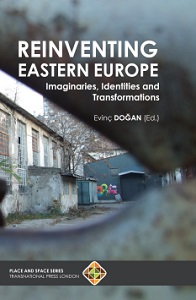Cultural Encounters and the Role of Art in Yugoslav-US Relations 1961-1966
Cultural Encounters and the Role of Art in Yugoslav-US Relations 1961-1966
Author(s): Stefana Djokic
Subject(s): Fine Arts / Performing Arts, Diplomatic history, Recent History (1900 till today), Cultural Anthropology / Ethnology, Post-War period (1950 - 1989), History of Communism, Cold-War History
Published by: Transnational Press London
Keywords: US; Yugoslavia; international relations; cultural encounters; art; 20th century; cold war; diplomacy;
Summary/Abstract: This paper discusses the role of art in Cold War diplomacy in Yugoslav-US relations between 1961 and 1966. During the 1960s, culture was often, sometimes unwittingly, at other times intentionally, infused with the politics of the Cold War. According to one line of existing scholarship, the rise of US art after WWII and exhibitions of American art abroad amounted to cultural imperialism and a “profound glorifying of American civilization.” These historians persuasively identified the political motives behind the exhibition strategies of American museums, such as MoMA’s promotion of Abstract Expressionism through the International Program of Circulating Exhibitions (established in 1952), or the US Government’s Central Intelligence Agency endorsement of US art through its offices around the world. Accordingly, Abstract Expressionist works were staged as par excellence representations of America’s democratic values, where the messages of freedom and individuality behind the works of such artists as Jackson Pollock were contrasted against the tyranny and totalitarianism of the USSR. Indeed, John Hay Whitney, Chairman of the Museum of Modern Art, explicitly stated that the role of the Museum and of art is to “educate, inspire, and strengthen the hearts and wills of free men in defence of their own freedom.”
Book: Reinventing Eastern Europe: Imaginaries, Identities and Transformations
- Page Range: 37-54
- Page Count: 18
- Publication Year: 2019
- Language: English
- Content File-PDF

